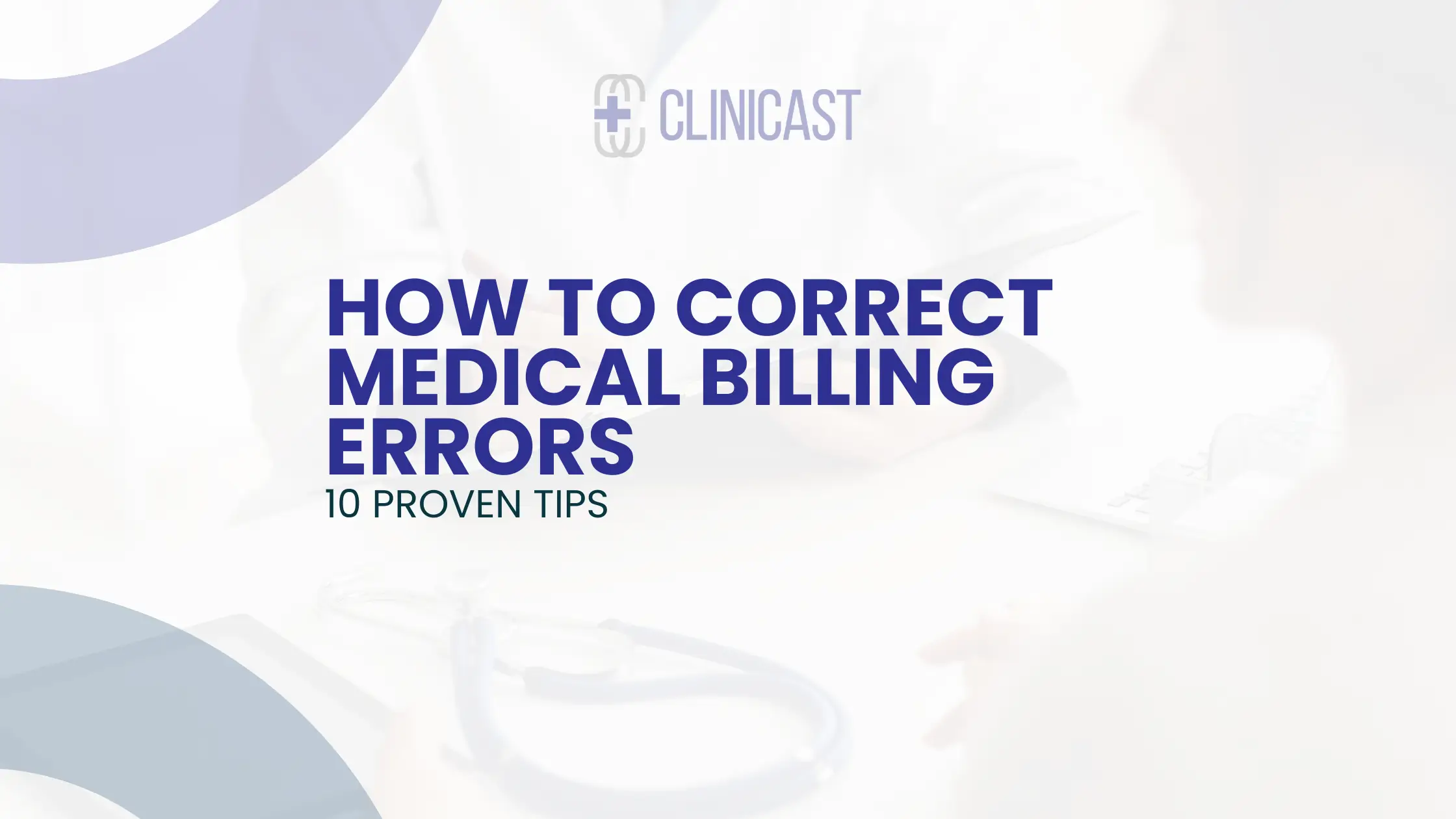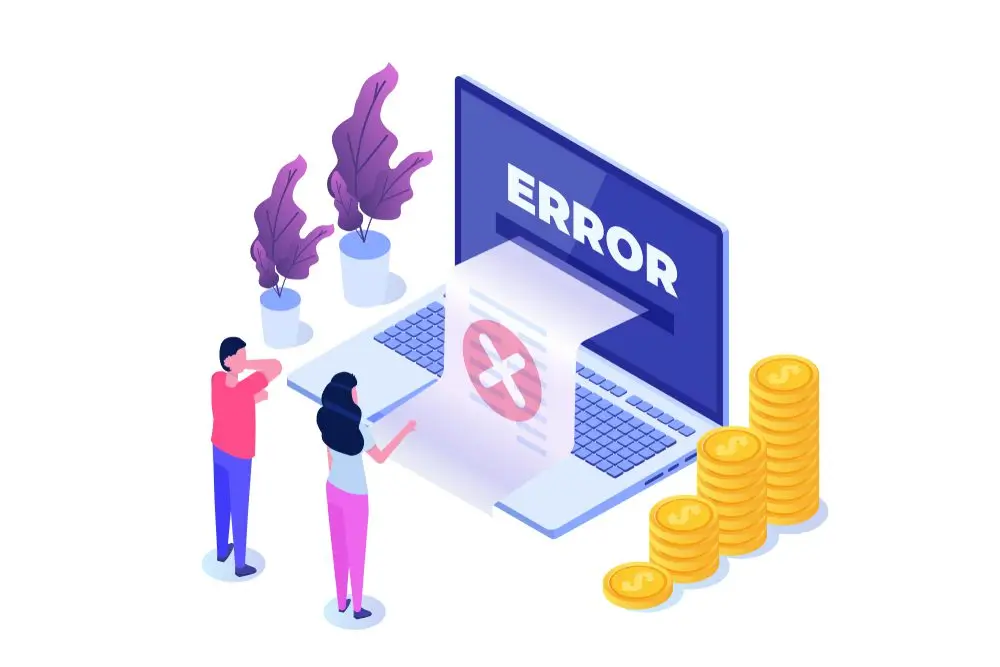With so much at risk, healthcare organizations must improve their billing processes. Here in this guide, we have unveiled 10 tips on how to correct medical billing errors. If you wish for your business to thrive, scroll down.
Patient billing is not enough, correct patient billing is what makes healthcare organizations succeed in the business world. However, several organizations have faulty medical billing practices that result in 80 percent of inaccurate medical bills and $68 billion in lost revenue.
The consequences of inaccurate medical billing for Medicare and Medicaid patients are even more significant. As an organization, you may be banned from billing those entities for an uncertain period if negligence is found in the billing process.
10 Tips for How to Correct Medical Billing Errors
It is common for medical billers to experience claim denials from time to time which is okay; it’s part of their job. However, if billers fine-tune their processes, they can reduce the claim denial rate to a great extent. In the following, we have revealed those ways so that you can improve your medical billing process in the simplest way.
1. Verify Personal and Insurance Information on Every Visit
As much as it is tempting to skip this step, it’s extremely crucial for the financial health of your organization. Whether it is a new or a returning patient, as a medical billing professional, you must check the patient’s personal and insurance information on each visit. Ignoring this step can easily lead to error-filled claims. Before the patient books, an appointment verifies their:
- Name
- Birth date
- Address
- Insurance information
Prior authorization from the patient is required for some medical treatments, so ensure you obtain that ahead of the appointment day. Failing to cross-check information before every appointment leads to claim denials.
2. Cross-Check Patient Information for Errors
Often, even the tiniest mistakes, like an extra A in the name or an incorrect birthdate, can lead to significant problems. Isn’t it better to take a few extra minutes to cross-check every information before submitting it than dealing with re-applying the claims? It may sound like an extra step, but submitting a clean claim is essential. This is as simple as asking the patient to verify their information on record before their appointment.
3. Double-Check Medical Codes and Insurance Information
According to the new updates, the ICD-10-CM code system is set to include 1176 new billable codes for dementia, maternal care, pregnancy, and social determinants of health (SDoH). With new medical codes added with this frequency, coders’ chances of errors increase. A claim submitted with an incorrect code results in denial. To ensure all the codes in a bill have been assigned accurately, use updated billing software that picks up errors automatically.
4. Perform Regular Staff Training
If you encounter the same problem over and over again, that means your staff needs regular training to prevent those errors. Your medical staff must be well-informed of the payer policies, the organization’s goals, and strategies. Keeping them out of the loop will result in increased claim denials. Whether annually, bi-annually, or quarterly, make sure you call regular training sessions with your team and motivate them to bring new ideas to reduce the denial rate and bring questions to the table.
5. Keep the Process Organized
Here, keeping the process organized means keeping track of current trends in the industry and incorporating them into your strategy. Leverage data and analytics to identify and resolve issues leading to claim denials. Use HIPAA-accredited tools to identify duplicate claims. Typically, duplicate claims result from mismanagement and poor flow of information in the system. An electronic billing system will help with better documentation and minimal claim rejections.
6. Act Quickly
Whether it’s about submitting a claim or responding to denied claims, as a billing specialist, you must act quickly in all instances. Once you receive a denied claim, get it corrected, ideally within a week. However, it is only possible if the claim tracking system is well established.
7. Collaborate with Payers/Insurers
Since payers are one of the concerned parties, they would be willing to collaborate with you to minimize claim denials. Payers will help address claim rejection efficiently, which eventually helps the organization achieve overall system efficiency.
8. Meet Deadlines
Claim submissions have strict deadlines, and failing to meet them results in denied claims. Typically, the time window for claim submission is 60-90 days plus an additional 45 days upon special request. This is a generous enough time to submit a clean claim within the deadline. Conversely, filing a claim after the due date will result in rejection and cost your organization a big chunk of revenue
9. Promote Teamwork
Hire skilled resources, establish a competent team, and leverage their expertise to tackle day-to-day tasks to file clean claims. Track report developments, set up benchmarks, monitor progress, and identify bottlenecks. Ideally, your team should comprise members from case management, registration, patient financial services, health information system management (HIM), nursing, IT, finance, compliance, and physicians.
10. Avoid Illegal Coding Practices
Upcoding and undercoding are common illegal coding practices encountered in the healthcare industry. Upcoding is when wrong or costly codes are applied to the bills to charge the patient for a service they have not received. On the other hand, undercoding is when codes are omitted from a patient’s bill to escape an audit. These practices might gain you some revenue in the short term. However, your reputation will be tarnished if you are caught doing it on purpose.
Conclusion
Creating and implementing an effective claim denial prevention and management strategy takes time and incurs costs, but it’s not impossible. Try to incorporate all these key points into your current billing practice to see a noticeable change in the claim denial or rejection rate. Read our insightful blog to know further about filing complaints of incorrect medical billing to CMS.



